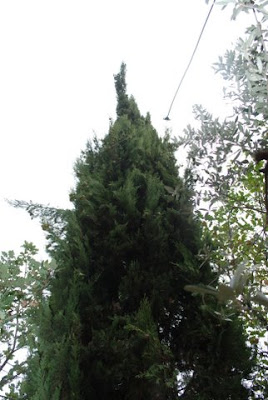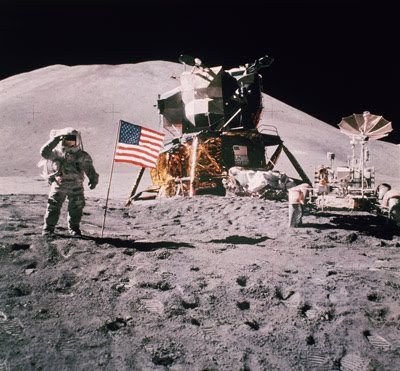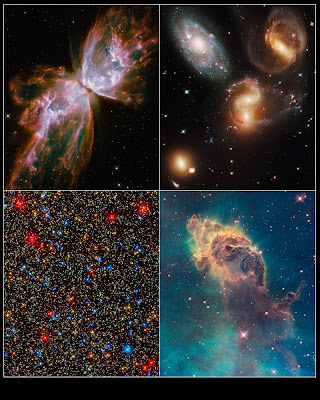
At the country place I now have a table on the front porch for the HW-8 and assorted gear. In the picture above you can see the Trastevere Flea Market Pi Section antenna tuner (upper left), a Japanese SWR meter (also from the flea market) , HW8 and Radio Shack speaker, Volkswagen Solar Cell, 12 Volt gel cell, key and cans...
I had been using a piece of wire just thrown up in the trees, but I thought I could do a bit better. I had some TV twin lead in the shack, and there was this useful-looking center connector... I had some AC line cord. Next thing you know I had a sorta-doublet antenna supported by a Roman Pine in Sabina (pictures below).
And it gets out! Worked IT0ULN in Sicily on 40 meters. Then I spoke to another QRP station, 2W0NNN in Wales, on 20. Also UU4JDD/P on Tuzla Island. Finally E53AX in Estonia.
Ioan, 2WONNN, sent this report:
Hi Bill, thanks for the email, I look forward to seeing the pics on your blog too. Very interesting reading, same goes for your QRZ page too. I had to laugh at your DX with an astronaut on Mir!!!
Your HW-8 and doublet is certainly working well; I remember you were completely readable with a good signal about 90% of the time, it was only the QSB that made it difficult. To be honest I was surprised to have a QRP QSO with someone in Italy. I was using my FT-817 with a new Par End Fedz that I'd catapulted over a tree. The top was about 15m high but oriented as a sloper to the north west. I've had a fair number of QSOs with East coast US stations so I thought I'd go for an over-the-pole route to the West coast... there in Italy you're pretty much spot on the opposite direction so I'm not sure it's all that directional!
73 and hopefully speak to you again for more QRP/QRP!
Ioan,
2W0NNN

































